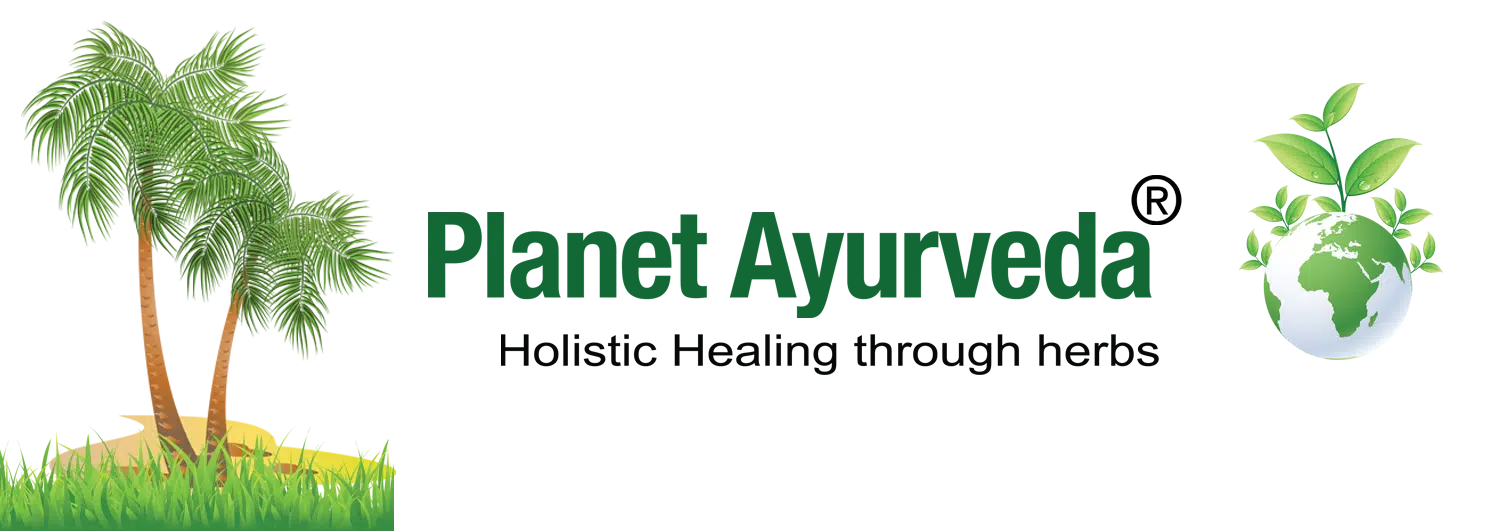Jalakumbhi/ Variparni/ The Wester-Lettuce/ Pistia Stratiotes Linn. – Ayurvedic Uses & Benefits
Abstract
Jalakumbhi is a well-known Ayurvedic medicinal plant recognised in the indigenous system of medicine and commonly found as a velvety green mat in stagnant or slow-moving water bodies. It has been referenced by Ayurveda practitioners since the time of the Nighantu Kala. The plant identified as Jalakumbhi in classical texts is generally equated with Pistia stratiotes var. cuneata. However, it is often confused with Eichhornia crassipes (also known as Pontederia crassipes), leading to taxonomical controversy. This confusion may arise due to overlapping features such as similar synonyms, habitat, and morphology, as well as inconsistencies in ancient manuscripts. Notably, all parts of Pistia stratiotes are used medicinally for treating various ailments.

Introduction
Pistia stratiotes L., a member of the Araceae family, is a free-floating aquatic plant commonly found in rivers, lakes, and ponds. It is popularly known by various names such as water cabbage, water lettuce, Nile cabbage, and shellflower. Apart from its ecological presence, it is often cultivated for ornamental purposes in ponds, lakes, aquariums, and water gardens. In Ayurveda, Pistia stratiotes is recognised as a valuable medicinal herb traditionally used for treating a wide range of ailments. It has been employed in managing stomach disorders, as well as inflammation of the throat and mouth. The leaf extract is specifically used in the treatment of conditions such as piles, syphilis, eczema, ulcers, and leprosy. Its therapeutic significance continues to be appreciated in traditional and folk medicine.
Scientific Classification
- Kingdom: Plantae
- Phylum: Tracheophyta
- Division: Magnoliophyta
- Class: Liliopsida
- Order: Alismatales
- Family: Araceae
- Genus: Pistia
- Species: Pistia stratiotes
Synonyms
- Variparni
- Kumbhika
- Vaarimuli
- Khamulika
- Toyavriksha
- Hata
- Kuli
- Kumbhi
- Toyakumbhi
- Tantana
- Vrikkadumaka
Vernacular names
- Hindi: Jal Kumbhi, Kumbhi
- English: Water Cabbage, Nile Cabbage, Tropical Duckweed, Water Lettuce, Shellflower
- Gujarati: Jalshamkala
- Assamese: Borpuni
- Bengali: Takapana, Tokapana
- Kannada: Anthara Gange
- Malayalam: Kodda-pail
- Manipuri: Kabokang
- Marathi: Gondala, Jalamandvi, Prasni, Sherbala
- Tamil: Agashatamarai, Akayat-tamarai
- Telugu: Akasatamara, Antara Tamara
- Oriya (Odia): Borajhanji
- Urdu: Jalakumbhi
- German: Muschelblume, Wassersalat
- French: Laitue d’eau, Pistie
- Spanish: Lechuguilla de Agua, Lechuguita de Agua, Repollo de Agua
- Dutch: Watersla, Mosselplant
Habitat
Pistia stratiotes is a native species of India and is predominantly found in tropical and subtropical regions, including areas like Assam. It commonly grows in freshwater bodies such as lakes and ponds. In contrast, Eichhornia originates from South Tropical America and was introduced to different parts of the world as an ornamental plant to enhance the appearance of water bodies.
Morphology
Pistia stratiotes is a floating, stoloniferous aquatic herb commonly found in ponds, streams, and other still water bodies across India, up to an altitude of 1000 meters. It often forms dense, impenetrable floating mats on the water surface. The leaves are green, fan-shaped, odourless, and have a bitter taste. They typically measure about 13 cm in length and 17 cm in width. The leaves exhibit parallel venation, a blunt apex, and entire margins, contributing to the plant’s distinctive rosette appearance.
Special note
A substance called water hyacinth has been derived from Kumbhika. This name is also used for some other substances. The name water hyacinth is not found in Charak Samhita, Sushruta Samhita, Raj Nighantu. and Dhanvantari Nighantu. Most scholars have considered Pistia stratiotes Linn. as water hyacinth. Another large water hyacinth is also found, which is Eichhornia crassipes Solms. This is a foreign plant which is now being planted a lot in ponds etc., probably from the point of view of beauty. They have been described separately. After the description of water hyacinth, its relation with algae has been discussed.
Classical categorisation
- According to Bhavaprakasha Nighantu – Mentioned under Pushpa Varga
- According to Kaiyadeva Nighantu – Classified under Aushadhi Varga
Ancient Verses
वारिपर्णी हिमा तिक्त्ता लघ्वी स्वाद्वी सरा कटुः ।
दोषत्रयहरी रूक्षा शोणितज्वरशोषह्न( पाठा.कृ )त् ॥
(Bhavprakash Nighantu Pushpa varga 20)
According to the above shloka, Jalakumbhi has cold potency, bitter and pungent taste and is light and dry in nature. It helps in balancing vitiated vata, kapha and pitta dosha. It is effective in the management of fever, bleeding disorders and emaciation.
Ayurvedic properties
- Taste (Rasa) – Bitter (Tikta), Pungent (Katu)
- Physical property (Guna) – Light (Laghu), Dry (Ruksha)
- Potency (Veerya) – Cold Potency (Sheet)
- Effect on tridosha – Balance Vata, Pitta and Kapha dosha
Therapeutic properties
- Piles
- Leprosy
- Goiter
- Dysuria
- Diuretic
- Relieves cough
- Anti Inflammatory
- Antipyretic
- Bleeding disorders
Systemic actions
External uses
Acts as an anthelmintic and promotes wound healing; beneficial in various skin disorders. Fresh juice is applied to wounds to help stop bleeding, while leaf paste soothes burning sensations. The ash obtained from the plant is used to treat itchy skin rashes.
Internal uses
- Excretory System – It possesses diuretic properties and is useful in managing dysuria by promoting urine flow.
- Digestive System – It exhibits mild laxative action and is helpful in relieving constipation.
Chemical composition
- Alkaloids
- Glycosides (including cardiac glycosides)
- Flavonoids (e.g., vitexin, orientin, luteolin-7-glycoside, vicenin, lucenin, gallic acid, rutin, catechin, and kaempferol)
- Steroids (e.g., stigmasterol, stigmasteryl stearate)
- Tannins
- Terpenoids
- Quinones and anthraquinones
- Polyphenols
- Anthocyanins (e.g., cyanidin-3-glucoside)
- Volatile oils
- Resins
- Sterols (e.g., stigmasta-4,22-dien-3-one)
Nutritional Composition (Leaves and Stems)
- Moisture: 92.9%
- Protein: 1.4%
- Fat: 0.3%
- Carbohydrate: 2.6%
- Fiber: 0.9%
- Ash: 1.9%
- Calcium: 0.2%
- Phosphorus: 0.06%
- Rich in Vitamin A, Vitamin C, and Vitamin B
Mineral and Elemental Content (Ash and Whole Plant)
- Potassium (K)
- Chlorine (Cl)
- Calcium (Ca)
- Sodium (Na)
- Magnesium (Mg)
- Silicon (Si)
- Aluminium (Al)
- Phosphorus (P)
- Sulphur (S)
- Manganese (Mn)
- Iron (Fe)
- Titanium (Ti)
Other Components
- Lignin: 12.5% to 25.7%
- Holocellulose: 26.7% to 37.1%
- Ash content: 14.3% to 20.7%
- Extractives: 21.8% to 35.6%
Modern overview
For Skin Problems
Pistia stratiotes, commonly known as water lettuce, possesses several bioactive constituents that support its traditional use in managing skin infections and promoting wound healing. Studies on its methanolic and acetone extracts have identified gallic acid, rutin, catechin, and kaempferol, all of which contribute to its therapeutic efficacy. Gallic acid and rutin aid in wound healing through their anti-inflammatory and re-epithelialization properties, while catechin and kaempferol support tissue regeneration and antimicrobial activity. The plant also demonstrates strong antioxidant activity, which helps reduce oxidative stress and facilitates faster skin repair. Additionally, its antifungal effects—notably against Trichophyton rubrum, Microsporum gypseum, and Epidermophyton floccosum—make it beneficial in the treatment of dermatophytic infections such as ringworm.
For Haemorrhoids
Pistia stratiotes, commonly known as water lettuce, has been traditionally used in the management of piles (haemorrhoids) due to its rich phytochemical profile. The leaves contain phenolic compounds, flavonoids such as vicenin and lucenin, and tannins, which are known for their astringent, anti-inflammatory, and healing properties. These constituents help reduce inflammation, swelling, and bleeding associated with haemorrhoids. The astringent action of tannins aids in shrinking swollen tissues, while flavonoids strengthen blood vessels and improve venous tone. Together, these effects support relief from discomfort, promote healing, and help in preventing recurrence when used as part of traditional formulations.
Practical uses
- A decoction of the leaves is used to alleviate difficulty in urination (dysuria).
- Crushed and warmed leaves are applied externally for the treatment of piles.
- The ash of the plant is applied to the forehead to relieve headaches.
- In cases of goiter, plant ash is administered with cow urine as a traditional remedy.
- Among the Munda tribe in India, the plant juice is used for managing ear disorders.
- For scalp ringworm, plant ash is applied externally to the affected area.
- In chronic skin conditions, the juice of the leaves boiled in coconut oil is used for external application.
- An infusion of the leaves is traditionally used for treating dropsy, urinary bladder issues, kidney diseases, hematuria, dysentery, and anaemia.
- The oil extract of the plant is employed in the treatment of worm infestations, tuberculosis, asthma, and dysentery. It is also applied externally for skin disorders, inflammation, piles, ulcers, and burns.
- In Gambia, the plant is used as an anodyne and for eye-washing purposes.
Part used
- Whole plant
Dosage
- Juice – 10-20 ml
- Powder – 2-8 gms
Conclusion
Pistia stratiotes, though often regarded as a nuisance in water bodies, holds remarkable therapeutic value in traditional medicine. With its antiseptic, diuretic, and cooling properties, it addresses a range of conditions from skin infections to urinary disorders. It is rich in bioactive compounds, showcasing the potential of aquatic plants in natural healing systems.



